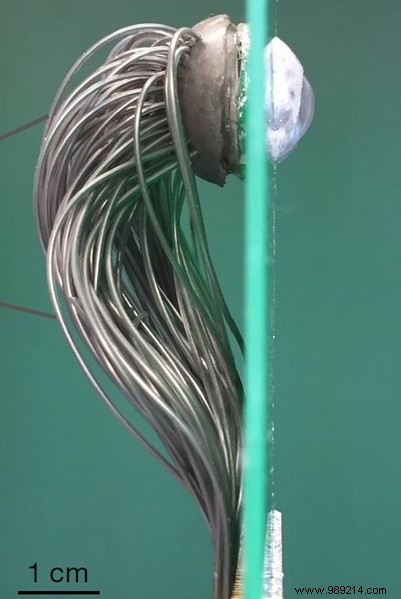A team of researchers has developed a prototype bionic eye with the same structure as its human equivalent. In a few years and a few improvements, this device could give millions of people the chance to regain correct sight.
In October 2019, the World Health Organization (WHO) published its very first global report on vision. According to this document, approximately 2.2 billion people are visually impaired or blind. However, among these cases, more than a billion could have been avoided or are still not treated. A recent study led by the Hong Kong University of Science and Technology and published in the journal Nature May 20, 2020 could give hope to many people.
Remember that artificial retinas have already been around for a few years. These are intended to restore – in a relative way – sight to people with macular degeneration. However, the device in question here is the first to be fully bionic. Baptized EC-EYE (ElectroChemical EYE), this bionic eye prototype is a real gem of technology. The latter has tiny sensors mimicking photoreceptor cells human eyes!

The sensors are in an aluminum membrane and tungsten in the shape of a half-sphere. However, this membrane holds thanks to a silicone polymer support. At the front, the researchers placed a lens whose objective is to take over the functioning of the eyeball . Inside, there is an ionic liquid intended to make the eye visually closer to a natural eye. When it comes to data processing, we're talking about thin, flexible cables made of liquid metal surrounded by rubber.
According to the researchers, the prototype has a resolution of only 100 pixels . As a result, it does not show great performance. He can indeed simply identify certain letters such as the "E", the "I" or the "Y". Moreover, its field of vision is only 100° while that of a real human eye is 160°. However, the leaders of the study are very optimistic and believe they are on the right track. The latter have also announced that in about five years, it will be possible to develop a bionic eye as efficient (or even more) than a human eye.
Scientists also want to increase the density of nano-sensors. The goal? Obtain ten times greater density than the photoreceptors in our eyes! You should also know that the project leaders are working on the possibility of equipping humanoid robots.